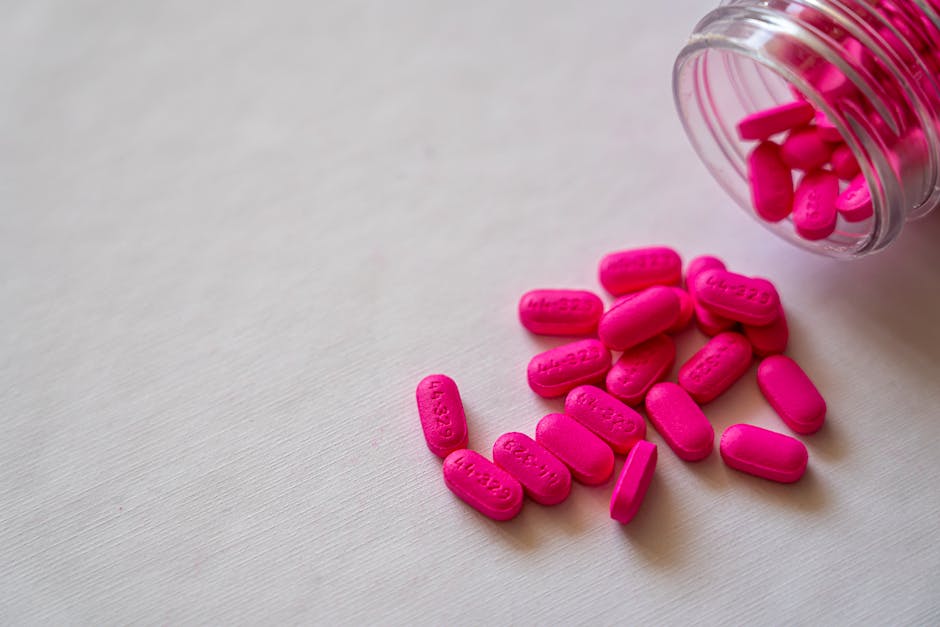Exploring the World of Sea Sickness Tablets
Imagine embarking on a dream cruise to a tropical paradise, only to find yourself feeling queasy and nauseous as the ship rocks back and forth on the open sea. This unpleasant sensation, known as seasickness, can quickly turn a vacation into a nightmare for many travelers. However, thanks to modern medicine, there is a solution at hand – sea sickness tablets. In this comprehensive guide, we will delve into the world of sea sickness tablets, exploring their history, effectiveness, and potential side effects. So, sit back, relax, and let’s set sail on this enlightening journey!
The Origins of Sea Sickness Tablets
Sea sickness, also known as motion sickness, has plagued seafarers for centuries. The first recorded instance of motion sickness dates back to ancient Greek and Roman times, where travelers sailing the Mediterranean Sea would experience symptoms of nausea and dizziness. In the 19th century, as maritime travel became more common, sailors and passengers sought remedies to combat the debilitating effects of seasickness.
One of the earliest forms of sea sickness medication was ginger, a natural remedy known for its anti-nausea properties. Sailors would chew on raw ginger or drink ginger tea to alleviate symptoms of motion sickness. However, as medical science advanced, researchers began to develop more effective and potent treatments for seasickness.

The Science Behind Sea Sickness Tablets
Sea sickness tablets, also known as antiemetics, work by targeting the vestibular system in the inner ear, which is responsible for balance and spatial orientation. When the body perceives conflicting signals from the eyes, inner ear, and proprioceptive receptors, it triggers a cascade of physiological responses that result in nausea and vomiting.
By blocking specific neurotransmitters in the brain, sea sickness tablets help to stabilize the vestibular system and reduce the symptoms of motion sickness. Common ingredients found in sea sickness tablets include dimenhydrinate, meclizine, and scopolamine, each of which targets different receptors in the brain to prevent nausea and vomiting.
Types of Sea Sickness Tablets
There are several types of sea sickness tablets available on the market, each with its unique mechanism of action and duration of effectiveness. Some tablets are taken orally, while others are administered through transdermal patches or injections. The most common types of sea sickness tablets include:
1. Dimenhydrinate
Dimenhydrinate is a popular over-the-counter sea sickness medication that is commonly sold under the brand name Dramamine. It works by blocking histamine receptors in the brain, which are responsible for triggering nausea and vomiting. Dimenhydrinate is available in both tablet and liquid form, making it a convenient option for travelers.
2. Meclizine
Meclizine is another widely used sea sickness medication that is sold under the brand names Bonine and Antivert. It belongs to a class of drugs known as antihistamines, which help to reduce symptoms of motion sickness by blocking the effects of histamine in the brain. Meclizine is available in chewable tablets, making it easy to administer on-the-go.
3. Scopolamine
Scopolamine is a potent sea sickness medication that is often administered through transdermal patches worn behind the ear. It works by blocking the action of acetylcholine, a neurotransmitter that plays a key role in triggering nausea and vomiting. Scopolamine patches are long-lasting and can provide relief from motion sickness for up to three days.
Effectiveness of Sea Sickness Tablets
Sea sickness tablets have been shown to be highly effective in preventing and treating symptoms of motion sickness. Clinical studies have demonstrated that these medications can significantly reduce the severity and duration of nausea and vomiting in individuals prone to seasickness. However, the efficacy of sea sickness tablets may vary depending on the individual’s susceptibility to motion sickness and the dosage of the medication.
For best results, it is recommended to take sea sickness tablets at least 30 minutes to an hour before embarking on a journey to allow the medication to take effect. Additionally, it is important to follow the dosage instructions provided by the manufacturer to avoid potential side effects or drug interactions.
Potential Side Effects of Sea Sickness Tablets
While sea sickness tablets are generally safe and well-tolerated, some individuals may experience mild side effects when taking these medications. Common side effects of sea sickness tablets may include drowsiness, dry mouth, blurred vision, and dizziness. In rare cases, more severe side effects such as allergic reactions or irregular heartbeats may occur.
It is essential to consult a healthcare professional before taking sea sickness tablets, especially if you have a history of medical conditions or are taking other medications. Pregnant women, breastfeeding mothers, and children should also seek medical advice before using sea sickness tablets to ensure their safety and efficacy.
Expert Opinions on Sea Sickness Tablets
According to Dr. Emily Smith, a renowned travel medicine specialist, sea sickness tablets are a valuable tool for preventing and managing motion sickness in travelers. “Sea sickness tablets are a safe and effective way to alleviate symptoms of motion sickness and enjoy a pleasant journey,” says Dr. Smith. “It is important to choose the right type of medication based on your individual needs and consult a healthcare provider if you have any concerns.”
Dr. James Johnson, a marine biologist and avid sailor, also recommends sea sickness tablets for anyone planning to spend time on the water. “As someone who has experienced sea sickness firsthand, I can attest to the efficacy of these medications in preventing nausea and vomiting,” says Dr. Johnson. “I always carry sea sickness tablets with me whenever I go sailing to ensure a smooth and enjoyable voyage.”
Common Misconceptions About Sea Sickness Tablets
There are several misconceptions surrounding sea sickness tablets that may prevent individuals from using them effectively. One common misconception is that sea sickness tablets are only needed for long sea voyages or rough seas. In reality, motion sickness can occur on any type of boat or ship, regardless of the duration or sea conditions.
Another misconception is that sea sickness tablets are only effective if taken after symptoms of motion sickness have already begun. In fact, sea sickness tablets work best when taken proactively before embarking on a journey to prevent symptoms from occurring in the first place. By following the recommended dosage and timing guidelines, individuals can maximize the effectiveness of sea sickness tablets and enjoy a comfortable and nausea-free trip.
FAQs About Sea Sickness Tablets
1. Can I take sea sickness tablets if I am pregnant?
It is recommended to consult a healthcare provider before taking sea sickness tablets if you are pregnant or breastfeeding. Some medications may not be safe for use during pregnancy and could potentially harm the fetus.
2. How long do sea sickness tablets last?
The duration of effectiveness of sea sickness tablets varies depending on the type of medication and dosage. Some tablets may provide relief for several hours, while others, like scopolamine patches, can last up to three days.
3. Are sea sickness tablets available over-the-counter?
Many sea sickness tablets are available over-the-counter at pharmacies and drugstores. However, some prescription-strength medications may require a doctor’s prescription to purchase.
To Wrap Things Up
Sea sickness tablets are a valuable resource for travelers seeking relief from the symptoms of motion sickness. By understanding the science behind these medications, their effectiveness, and potential side effects, individuals can make informed decisions about using sea sickness tablets to enjoy a comfortable and nausea-free journey on the open sea. So, next time you set sail on a cruise or boat trip, don’t forget to pack your sea sickness tablets and experience smooth sailing all the way!



